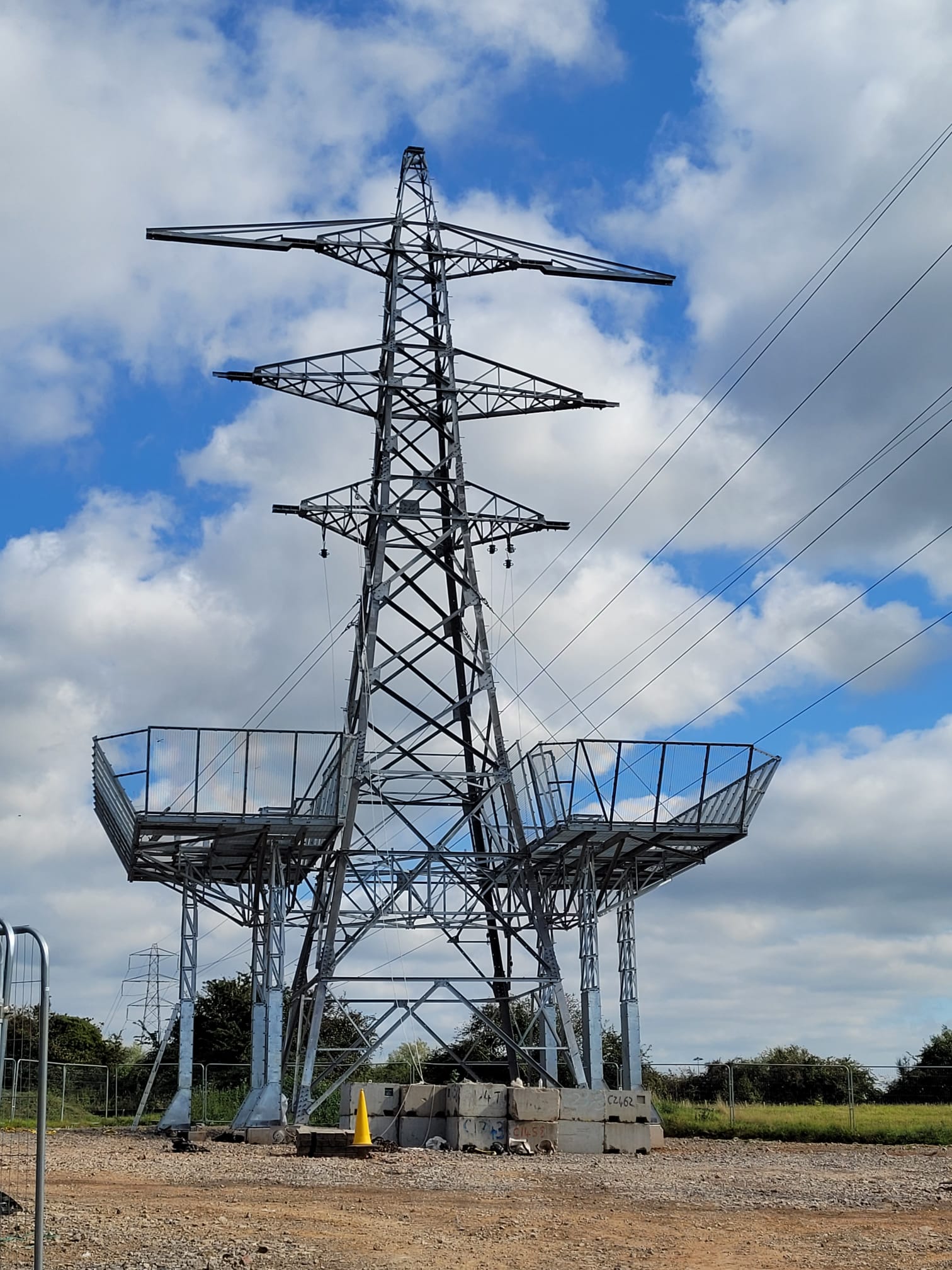

User connection configurations
Connections consider a variety of factors, including multiple connections, system requirements and DNO (Distribution Network Operators) demands. This ensures that use of system outages is as effective as possible, and the assets built are usable for multiple types of connections. Each of these factors help to determine both the overall asset design and the specific connections type. Below are some of the commonly identified connection types.
Bay connections.

Substations built according to SQSS (Security and Quality of Supply Standard) guidance consist of a double circuit turn in, with a main and reserve busbar (double busbar configuration). The double circuit, double busbar configuration provides an efficient and reliable point of connection for a variety of users, and accommodates for multiple drivers, such as DNO demand. Connections are split into ‘bays,’ which connect the substation assets to connection assets. A bay connection provides a user with a connection to both the main and reserve busbars. A bay consists of a set of equipment which connects a circuit into a substation, including its own set of switchgear. Switchgear includes a variety of equipment including circuit breakers, disconnectors, and lightening arrestors.
They are significant in cost and time to build, but bays are also usable for a large variety of connections- and so assets generally do not need to be bespoke or altered for different equipment. Bay equipment protects both the user connecting and the National Grid by providing a safe point of disconnection from the busbars without adverse impact to either system. These types of connection are commonly offered as they provide a safe, reliable, and efficient solution for a multitude of projects and system requirements.
LILO (line in and line out) connections
A LILO connection requires the diversion of an existing Overhead line (OHL) into a substation. This would mean that a section of conductor from an already existing circuit would be diverted to provide the line in, and then out of the substation to re-join the existing OHL circuit- creating a single turn in- and two feeder lines.
Single turn in sites are less reliable as opposed to a double circuit turn in. On a double circuit turn in, there are four feeder lines- two in and two out, meaning there is adequate redundancy to ensure the site remains operational in the event of fault or failure. With only two feeder lines- if there is a circuit failure- this leaves the site at single circuit risk- meaning if another issue were to arise, the site could be completely cut off- causing wider system impact.

Tee off connections
In this type of connection- an OHL is diverted directly to supply a specific connection point. Overhead lines are connected to create a new single circuit. This adds both to the complexity of the initial circuit- but also puts the site as potential risk of failure in cases of fault on the single circuit. It could also cause fault on the existing circuit the new single circuit is connected to.
In general, NGET (National Grid Electricity Transmission) no longer supports individual, LILO or Tee off style connections. Bespoke connections into OHL are not economically nor resource efficient- requiring system access and outage for a potentially low reliability asset. They are also unsuitable for multiple system needs- like the need for new Grid Supply Points. New transmission infrastructure must be as reliable and secure as possible, to minimise the cost for both networks and the end consumer. Find out more about how we trigger new assets here.
Grid parks
The Grid Park concept changes the standard idea of a full bay for each connection. In Grid parks, three customers are connected at the same super grid transformer (SGT). They share important protection equipment, such as a circuit breaker. Sharing a circuit breaker means that the amount of equipment required for each connection is reduced, lowering time needed for system access and the cost of assets. Only one bay extension is needed for up to three customers- reducing the works in comparison to full switchgear provision in a standard bay connection. Grid parks also help ensure that outages can be planned and used effectively. For more information on how outages are scheduled, and why system access must be coordinated, please click here.
It does also mean that for maintenance or in case of fault, all connections into that SGT would need to come offline. Therefore, each customer in a grid park is given a non-firm connection agreement. A non-firm connection means that under certain conditions- such as fault conditions on a specific circuit or in a region- operation of these connections can be controlled by the Electricity System Operator to ensure system stability is maintained.
Find out more about some of our customers connecting into to grid parks here.
Tertiary connections
Tertiary connections have a similar concept to Grid Parks- as connections share equipment, rather than having a specific individual bay. In some transformers, there are two primary windings and one tertiary, otherwise known as a third winding, which can be used for another connection. However, this can pose issues. Reliability can be compromised, as any maintenance to other connections into another winding requires the whole transformer to come offline- which would include the tertiary connection. Furthermore, Tertiaries are often installed on SGTs (Super Grid Transformer), which feed DNO networks. This can mean that DNOs charge for third party works required to reinforce the networks to support the additional capacity on their own networks. Tertiaries can also only accommodate small connections, with only 57MW of capacity available to utilise- meaning they are a rarely offered type of connection.
The specifics of any type of connection will also depend on the site itself, including its layout and its equipment type. For more information on the types of substations on our network, please click here.


